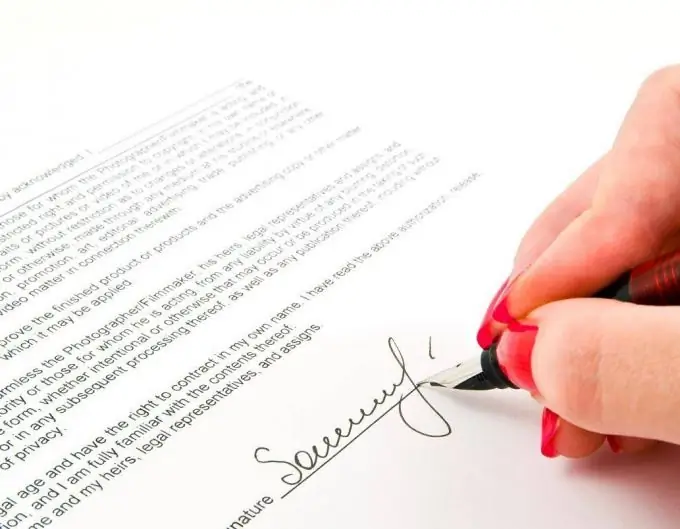- Author Lauren Nevill [email protected].
- Public 2023-12-16 18:48.
- Last modified 2025-01-23 15:15.
Each person's signature is as unique as their biocharacteristics. It is a traditional way of confirming documents and some transactions and a kind of personal identification. Copying a signature is actually forging it. Forgery and use of knowingly forged documents is punishable by law, including criminal liability.

Instructions
Step 1
To copy the signature you will need: a sheet of paper where you want to place a copy of the signature, and a pen - for an easy way of copying; computer, scanner, printer, paper and pen - for a more sophisticated method. Scan the signature sample, place the sample in the computer and print the signature sheet on a blank sheet or letterhead. When printing on a printer, use the lowest saturation color, preferably blue or purple, so that the signature is barely visible against the background of the paper. After printing out the signed form, carefully trace around it with a fountain pen.
Step 2
If you use an easier method, then put the original with the signature on a blank sheet and, using a fountain pen with a refill without ink, circle the original signature, slightly pushing the spelling, then circle the imprint of the signature with a fountain pen.
Step 3
A method similar in complexity: in daylight, fix the document with the original signature on the glass of the window, put a blank sheet on top and reproduce the translucent signature with a pen. For convenience and accuracy of the signature, you can reproduce it on glass with a fountain pen with a refill without ink, and then circle the print with a fountain pen with paste on a more convenient surface. If there is a glass table, place a light source under it, put a document with the original signature on the table and carry out the same operations as on the window glass.
Step 4
The simplest method in terms of its mechanism and the most difficult in terms of copying quality (for natures with high artistic potential) is to put a signature according to the sample.






